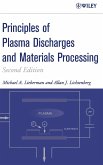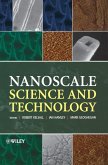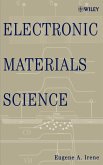Research in negative refraction metamaterials, materials with special optical and electromagnetic properties, has been growing at spectacular rates over the past 2 to 3 years. The underlying science and potential applications of metamaterial research is groundbreaking. The subject is interdisciplinary and has aroused great interest in the physics, chemistry, materials science, photonics and electrical engineering communities. Presently there is no book dealing with negative refraction materials. This book reviews the state of the art in the emerging research area of metamaterials which can exhibit negative refraction and related focusing effects. Each chapter of the book is authored by international leaders in the field. The book covers both fundamental principles of operation as well as RF/microwave and optical applications.
Learn about the revolutionary new technology of negative-refraction metamaterials
Negative-Refraction Metamaterials: Fundamental Principles and Applications introduces artificial materials that support the unusual electromagnetic property of negative refraction. Readers will discover several classes of negative-refraction materials along with their exciting, groundbreaking applications, such as lenses and antennas, imaging with super-resolution, microwave devices, dispersion-compensating interconnects, radar, and defense.
The book begins with a chapter describing the fundamentals of isotropic metamaterials in which a negative index of refraction is defined. In the following chapters, the text builds on the fundamentals by describing a range of useful microwave devices and antennas. Next, a broad spectrum of exciting new research and emerging applications is examined, including:
_ Theory and experiments behind a super-resolving, negative-refractive-index transmission-line lens
_ 3-D transmission-line metamaterials with a negative refractive index
_ Numerical simulation studies of negative refraction of Gaussian beams and associated focusing phenomena
_ Unique advantages and theory of shaped lenses made of negative-refractive-index metamaterials
_ A new type of transmission-line metamaterial that is anisotropic and supports the formation of sharp steerable beams (resonance cones)
_ Implementations of negative-refraction metamaterials at optical frequencies
_ Unusual propagation phenomena in metallic waveguides partially filled with negative-refractive-index metamaterials
_ Metamaterials in which the refractive index and the underlying group velocity are both negative
This work brings together the best minds in this cutting-edge field. It is fascinating reading for scientists, engineers, and graduate-level students in physics, chemistry, materials science, photonics, and electrical engineering.
Hinweis: Dieser Artikel kann nur an eine deutsche Lieferadresse ausgeliefert werden.
Learn about the revolutionary new technology of negative-refraction metamaterials
Negative-Refraction Metamaterials: Fundamental Principles and Applications introduces artificial materials that support the unusual electromagnetic property of negative refraction. Readers will discover several classes of negative-refraction materials along with their exciting, groundbreaking applications, such as lenses and antennas, imaging with super-resolution, microwave devices, dispersion-compensating interconnects, radar, and defense.
The book begins with a chapter describing the fundamentals of isotropic metamaterials in which a negative index of refraction is defined. In the following chapters, the text builds on the fundamentals by describing a range of useful microwave devices and antennas. Next, a broad spectrum of exciting new research and emerging applications is examined, including:
_ Theory and experiments behind a super-resolving, negative-refractive-index transmission-line lens
_ 3-D transmission-line metamaterials with a negative refractive index
_ Numerical simulation studies of negative refraction of Gaussian beams and associated focusing phenomena
_ Unique advantages and theory of shaped lenses made of negative-refractive-index metamaterials
_ A new type of transmission-line metamaterial that is anisotropic and supports the formation of sharp steerable beams (resonance cones)
_ Implementations of negative-refraction metamaterials at optical frequencies
_ Unusual propagation phenomena in metallic waveguides partially filled with negative-refractive-index metamaterials
_ Metamaterials in which the refractive index and the underlying group velocity are both negative
This work brings together the best minds in this cutting-edge field. It is fascinating reading for scientists, engineers, and graduate-level students in physics, chemistry, materials science, photonics, and electrical engineering.
Hinweis: Dieser Artikel kann nur an eine deutsche Lieferadresse ausgeliefert werden.







